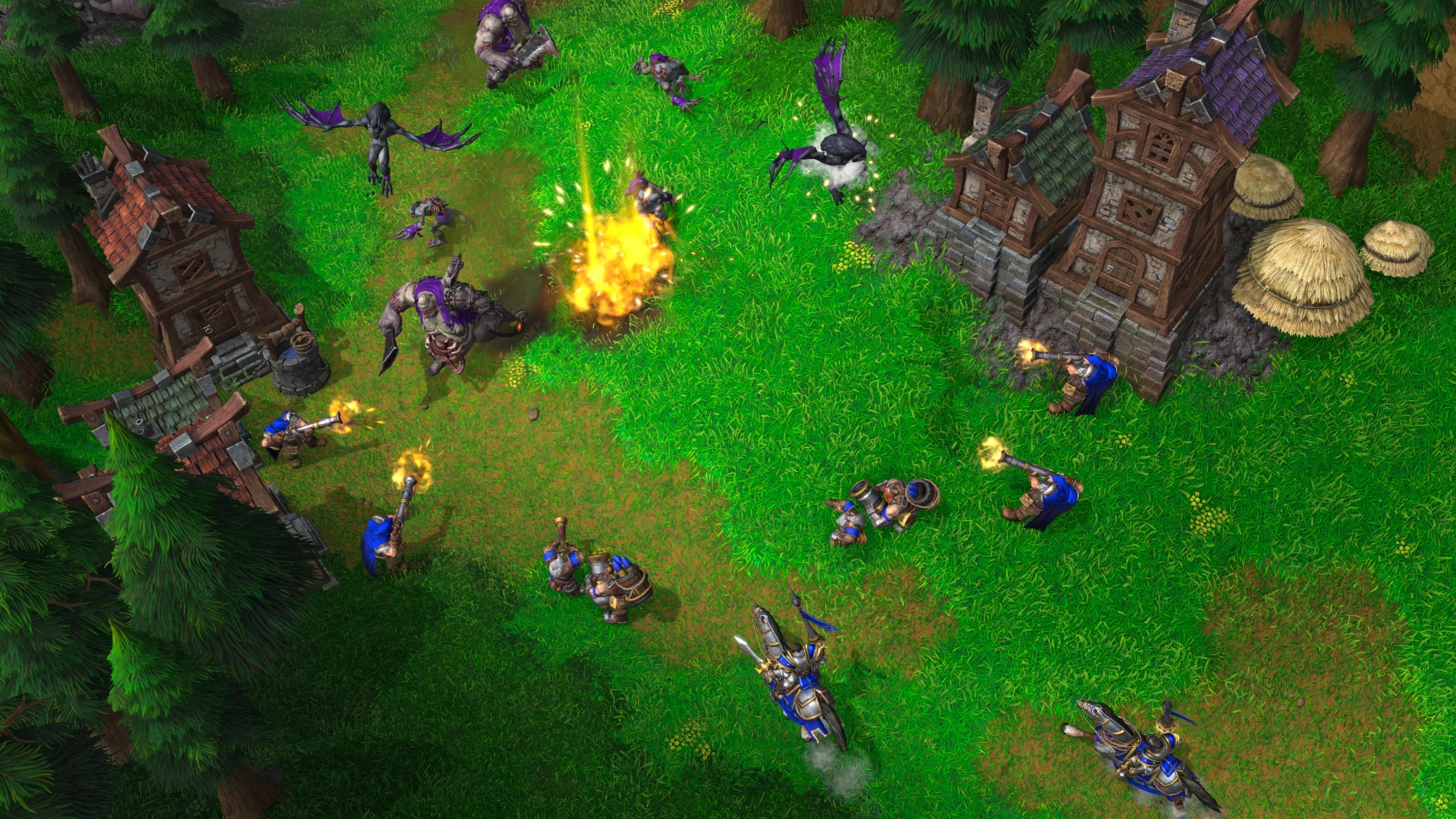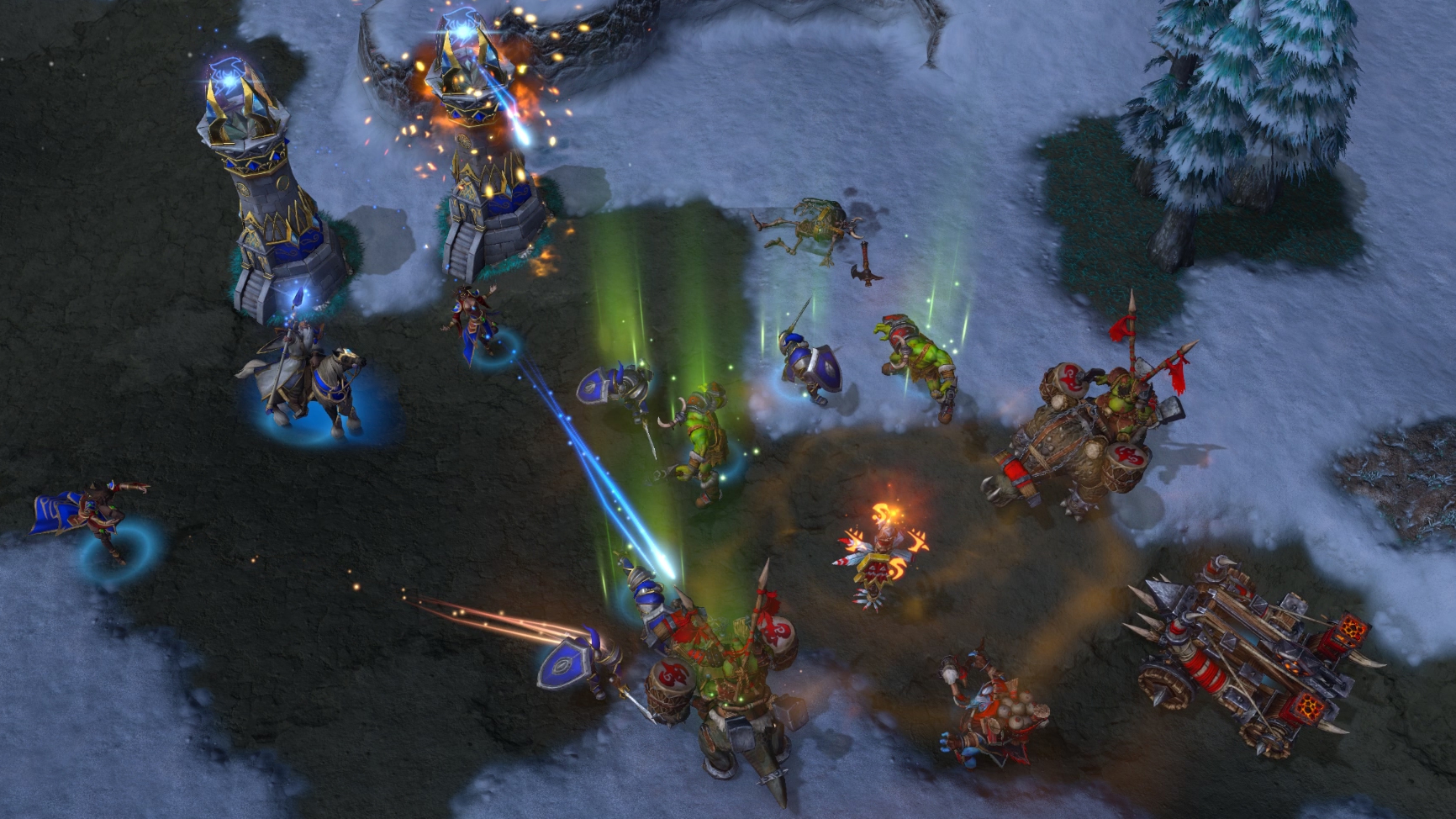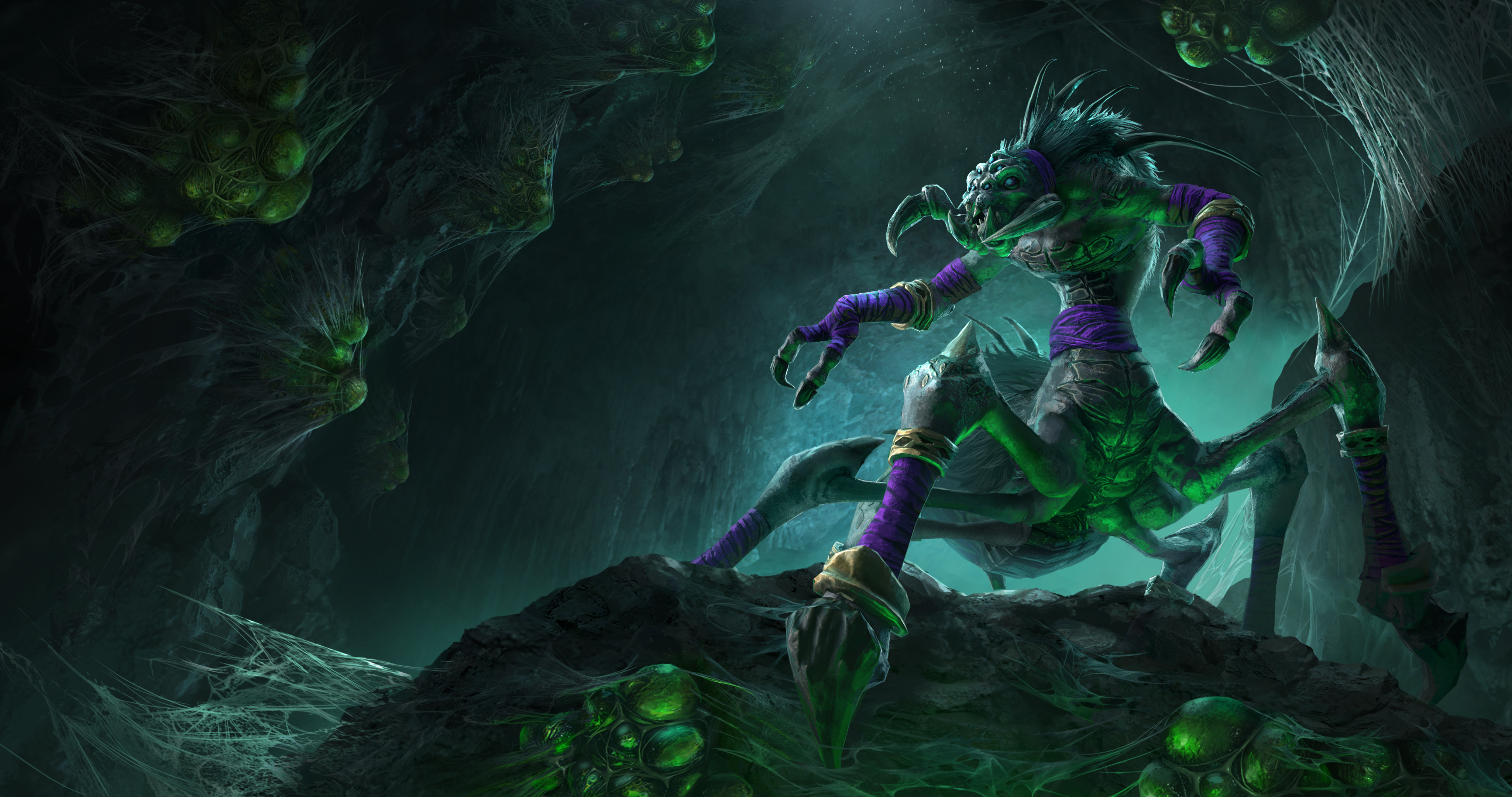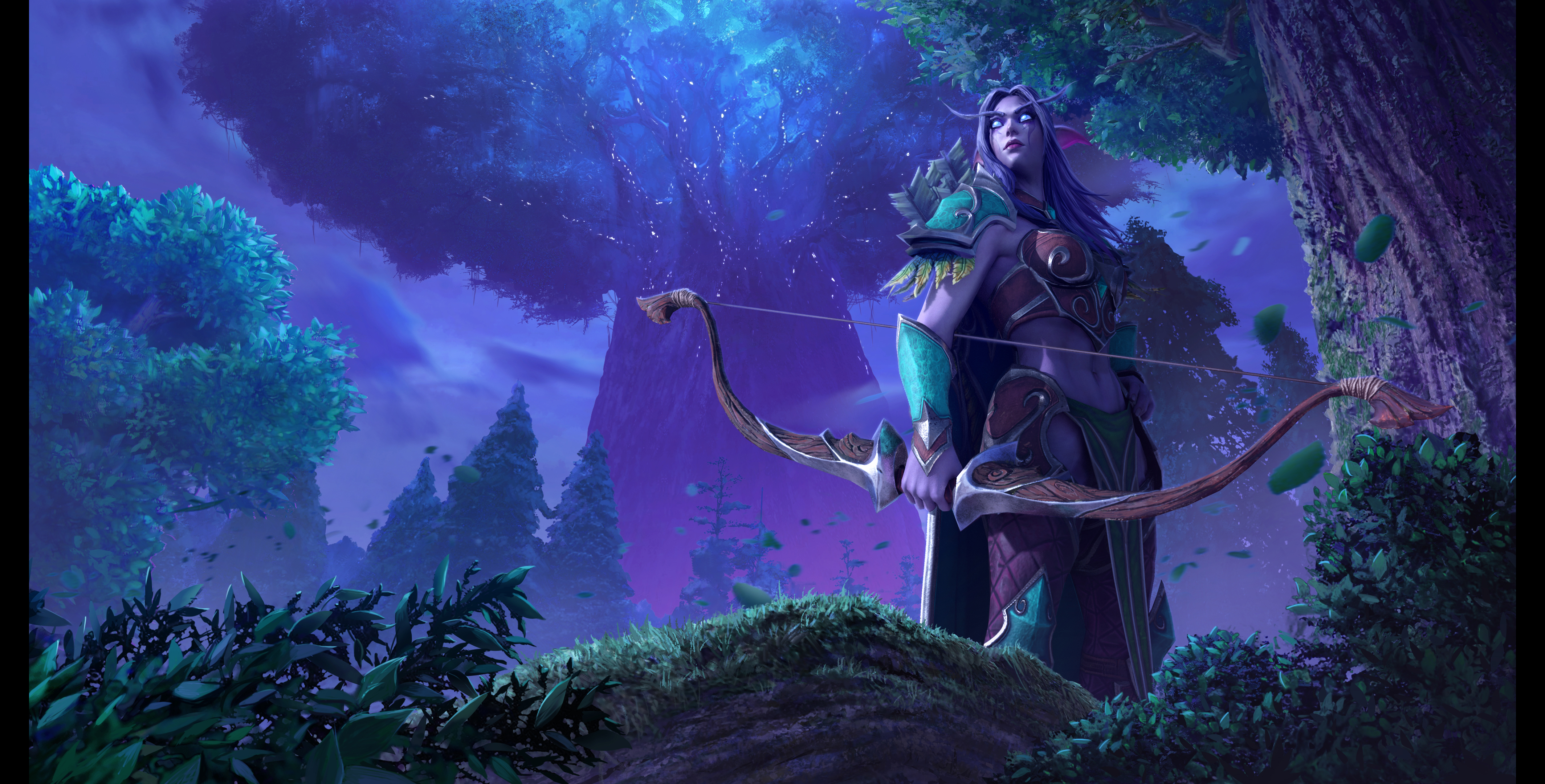Why Warcraft 3: Reforged changes the original's graphics, gameplay, balance and matchmaking
Senior developers on the new / old strategy game explain how this nostalgia trip required reworking from the ground up.

Warcraft 3 was never truly gone. For 18 years, the game that spawned Dota stuck around, missing from Blizzard's Battle.net launcher but still alive thanks to a dedicated fanbase of modders and multiplayer fans. Now it's back, reworked for modern PCs, given a nip and tuck to fix problems that have lingered since before World of Warcraft even existed. Warcraft 3: Reforged is a different game in many ways, and is specifically designed to draw in World of Warcraft players and those who might never have fired up an RTS.
The RTS genre has been on a downturn in recent years, even on the brink of death, so despite Reforged’s gorgeous graphics and friendlier combat, it’s got a tough march ahead. We spoke with Reforged producer Kaeo Milker (a game tester on the original Warcraft 3), lead artist Rob McNaughton (who was the lead technical artist on the original) and lead designer Matt Morris, who was one of the original designers on WC3, about bringing this classic Blizzard game from the golden days of the RTS into a very different 2020.

PC Gamer: What were the biggest changes you made to Warcraft 3: Reforged from the original?
Matt Morris: We touched every single mission. We've actually changed several missions to fit what people remember from World of Warcraft.
The Culling of Stratholme was an example. We had looked at the fall of Silvermoon, when Arthas comes in and has that confrontation with Sylvanas. We have looked at the cutscenes, because of these new [character] models. A lot of times the cameras are [zoomed] in a little bit more than they used to be. There's actually more going on in the scene, to give a little bit more context to the story, to help those story moments breathe a little bit more.
What else changed to better resemble WoW?
MM: We looked at the Fall of Dalaran. We matched the city to what it looks like in World of Warcraft. Dalaran actually had a lot of presence in [Warcraft 3:] The Frozen Throne. So we've touched all those things.
Keep up to date with the most important stories and the best deals, as picked by the PC Gamer team.
How did you make the game friendly to new RTS players?
MM: We looked at some of the early campaign missions, from the prologue to the very first human missions. We looked for ways to help a player who may not understand RTS as well as [those] people who remember this game, coming back.
If your building is damaged, you should take a peon and you should repair. We would do things to highlight the peon and if they select the peon, you can see the little repair button blinking. We did little things like that to help players understand what they should be doing in the missions.
Kaeo Milker: Originally, the difficulty started at Normal and the only way you get Easy is if you failed a mission. We’d give you the option of falling back to Easy just for that one mission, while you were struggling with it. But now we've actually added an Easy difficulty level so that anyone, regardless of whether they’ve played an RTS, can just just jump in and have fun with the campaign.
Were there types of missions that required gameplay changes?
MM: There are a couple of missions where the objectives weren't super clear. We've made more of a breadcrumb, like, this is what the players expect to do, so why don't we be a little bit clearer in the objective to say what the player needs to do.
Can you give a specific example?
MM: There is the moment when the orcs are in Ashenvale and they've been chopping down a lot of trees and Cenarius, the demigod, shows up and he's really offended by what's going on. There is a part of the mission where the gameplay starts, and players are left with a little bit of 'what am I actually supposed to do?' Because you have these bases all throughout the map and they're just getting overrun.
So at the start of the mission we said, 'hey, your first objective is to retreat to the main base and hold out until the end of the attack' to get a little bit more clarity as to what's happening.

What changes did you make for multiplayer balance?
MM: From the classic version, we've already been doing a lot of balance changes. We had three or four patches last year to level up the multiplayer.
A lot of the reason why we did it in phases was because we felt like if we went in and just started touching everything at the same time, if we accidentally broke something, we wouldn't be quite sure what we had broken.
So we looked at just the missions first, and then we looked at just the heroes, and then we looked at the units and the races, and then we did a patch where we just addressed the items.
Are multiplayer changes done, or are you still tweaking?
MM: I know we're not quite at the happy place we want to be, so we're going to continue to look at multiplayer stuff.
What’s changed about the custom map editor?
MM: We have done a lot of things to remove some of the arbitrary restrictions we had on the game back in the day because of how the tech was done. As an example, we used to have 12 players on a map, now it's up to 24. There are a lot of little things that we have done, like removing the limits to the number of units on the map. Anything we could do to give more power to the user who wants to make these maps and continue to push that custom mode forward.
What are some of the graphical changes that you made, besides making the game high resolution?
Rob McNaughton: In the original Warcraft 3, a lot of times a simple creep would be reused multiple times: Tinted, scaled, then he would be all over the place. We went to great lengths this time around to make each version of, like, a furbolg—instead of it just being scaled up, it’s actually going to be a completely new model. So we added a ton of new models. Individual story characters that used to be just a footman or a paladin, now there are new, unique, individually art-ified paladins.
How has the art style changed overall?
RM: One of the things that we really wanted to do is that instead of just seeing a good character from very far away in terms of camera distance, this time we wanted to take that same model, zoom the camera in and use it as the portrait. It's that one model, and now it looks great from not only far away but also very up close, which makes our in-game moments in a singleplayer campaign way more visually attractive. That’s one of my favorite upgrades, how we do those story moments now with this upgraded art. It just looks way better.

They’ve been working on that in World of Warcraft’s in-game cutscenes, right? How much influence did the other art teams have on WC3?
RM: We worked with the in-game cinematic team on multiple games. I would say in particular we learned a lot from Heroes of the Storm. Those characters look great far away and up close.
KM: The story mode [in Warcraft 3] had different models than we had for the in-game units, and the portraits were a different model than the in-game units. I think Heroes is the first time where what you see in the shot and what you see in your portrait and what you see in game is the same model. That's really carried through into Warcraft 3: Reforged. These models are so high quality that they can hold up in any scenario. We're super excited to see what players and custom map makers are going to do with these models as well.
StarCraft: Remastered was an identical, frame-for-frame graphical update. Why was it okay to make changes in Warcraft 3: Reforged in a way that might not have been okay for StarCraft?
MM: We took the same approach with Warcraft 3: Reforged as we did with StarCraft: Remastered, which is, we started with the community. We went and talked to the people who've been playing this game ever since it was launched. Even though we created the game, we were no longer the experts in what the game needed or wanted.
We talked to a lot of pro players and asked them a lot of questions about balance and what would they be expecting if they were to come back and start playing with our game? How can we do things to make it more enjoyable for them?
And the same thing from the map-making community. We asked those makers a lot of questions about what things you find frustrating, using the editor? There's a lot of third-party tools that they were using to compensate for the lack of power in for our editor. So we looked at ways to integrate the things that they're using into the editor to make it a little bit easier.
What was some of the feedback you received on balance and maps?
MM: Our early way of letting players know that Blizzard's coming back to look at this game was we did an update across many of the ladder maps, and we created new versions. A lot of it was just little tweaks here and there. The creep camp was dropping a permanent item, but now it’s dropping consumable items. We changed up the loot progression. That was our first step into balance changes.
What about heroes?
MM: When we looked at the heroes, the pros would only take a specific hero. Undead would only do the death knights. Night elves were only doing a demon hunter. Orcs were always blade master. And so we had a lot of questions as to why were they not choosing some of these other ones? Our approach was never to really take their favorite heroes and make them less functional. We tried to take some of the other heroes and make them a little bit more desirable, to spice it up.
And races?
MM: When we got to the individual races, we would ask, why aren't you using this? An example: hippogryph riders. There was research required for the archer in order to mount the hippogryph. And so we just made it so you don't need the upgrade anymore. Once you have archers, you have hippogryphs, you can just do this.

What bumps did you run into along the way?
MM: This became a famous one: the Keeper of the Grove for the night elves. We made some changes to the treants, because we knew that entangling roots was really good. Anytime a player can stop, snare or root a unit, it was very advantageous and the other player could pick them off. So we did a little buff on the treants, and made them move a little bit faster and do a little bit more damage. All these numbers are really small. It's adding 10 hit points to the treants and making the DPS tick up just a little bit.
But the players hadn’t been using that hero for so long that they found that the treants were really strong at that point. So we've taken that lesson: Even a little bit can swing balance a bit far. So our approach internally is to do a little bit extra testing, just making sure we're hitting a spot before we release it.
Are you mostly expecting original Warcraft 3 players to return, or current World of Warcraft players, or a brand-new audience?
KM: It's a really cool game for us, because it's going to be an awesome combination of those things. There were millions of players who experienced this game originally 17, 18 years ago, some of whom have never come back since the original launch. Maybe they literally haven't touched it in a decade. Plus, I think there's a really awesome opportunity here where we've had millions and millions of people come and play World of Warcraft over the years, and they now have relationships with these characters. It's really kind of the origin story of World of Warcraft.
What are your hopes for Reforged? Long-term esports competition? A new series of Warcraft-based RTS games? Can we talk about Warcraft 4?
KM: This is such a cool opportunity to bring diehard RTS players and brand new people back into it again. You probably saw the announcements recently that we are in collaboration with ESL on a multi-year esports program for Warcraft 3, so we're really excited to see how that goes. RTS is still going strong, but it's morphed into things like MOBA and mobile. This is going back to its roots, and I think there's a lot of opportunity here. This is a moment to breathe new life into the RTS genre.
Heather Newman has reported on games for more than 25 years, with an internationally syndicated column and stories in dozens of magazines. In World of Warcraft, her Mythic Plus dungeon team was No. 1 in all-star points in North America for a number of weeks for slightly cheesy reasons. She scored one measly point against Jonathan “Fatal1ty” Wendel in Unreal Tournament and was, exceedingly briefly, top 50 world in Halo.

